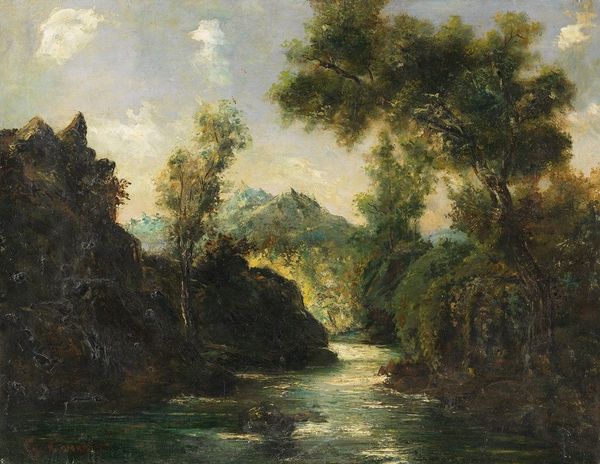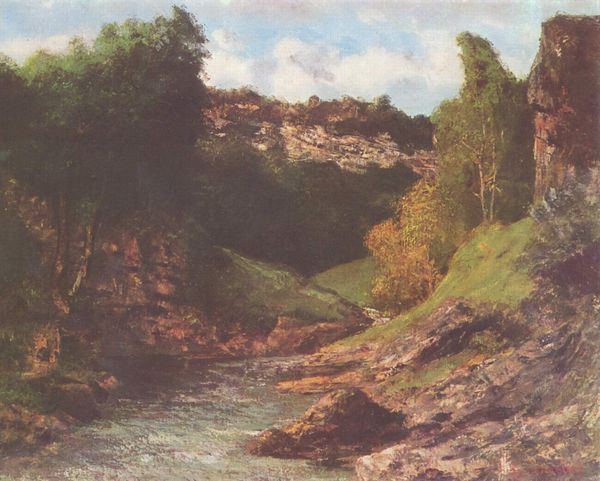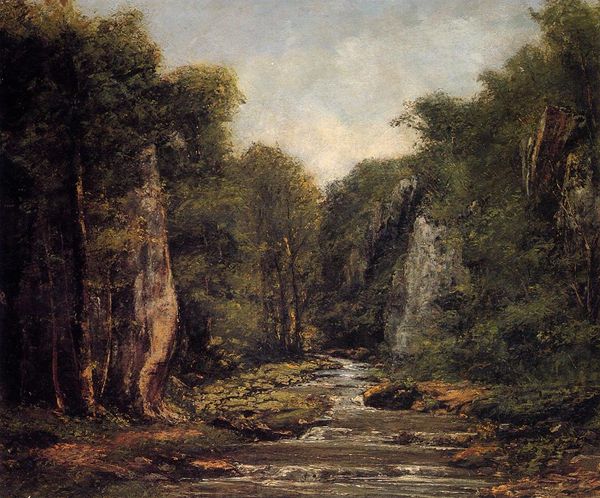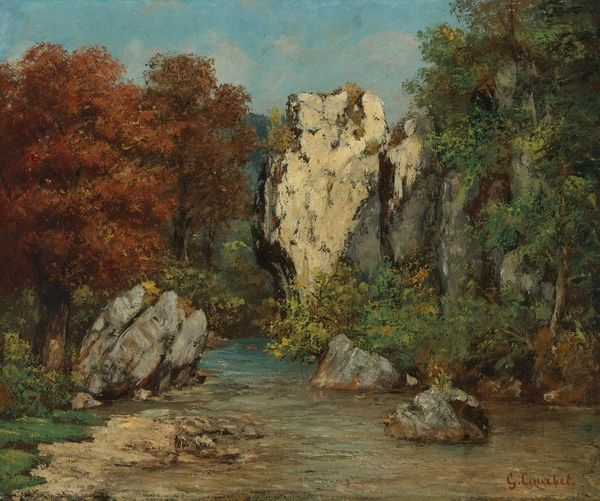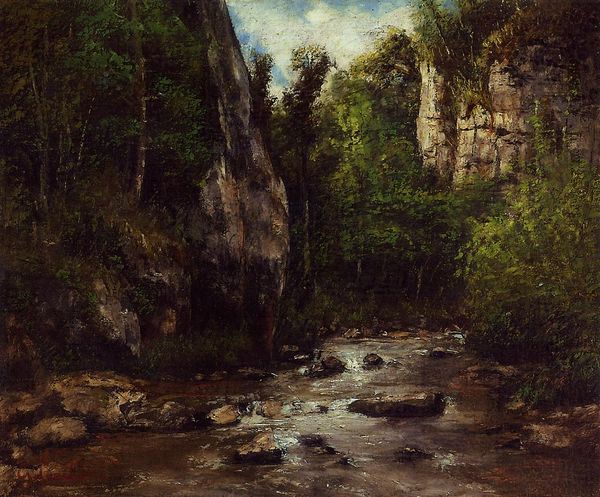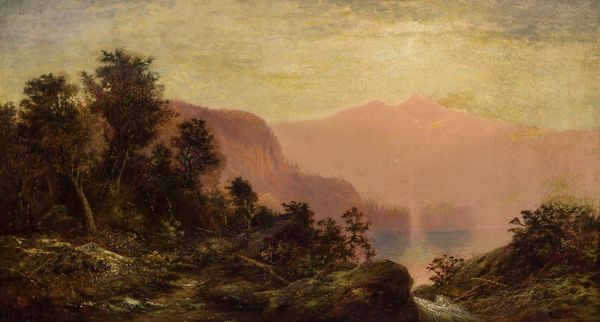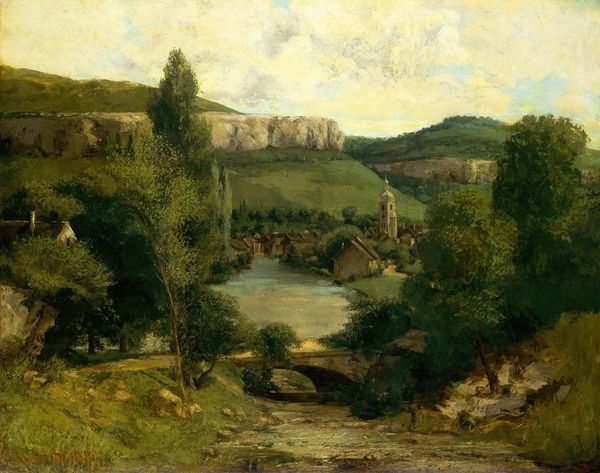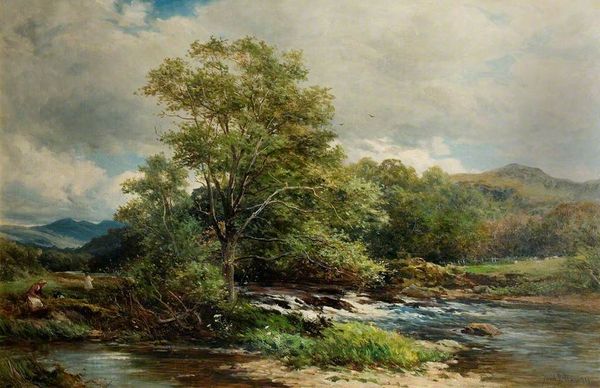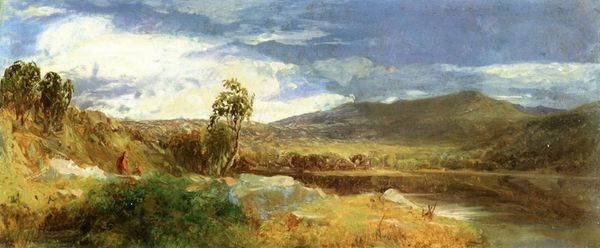
painting, oil-paint
#
tree
#
sky
#
painting
#
oil-paint
#
landscape
#
river
#
impressionist landscape
#
oil painting
#
romanticism
#
natural-landscape
#
water
#
realism
Copyright: Public domain
Curator: Looking at "River in a Landscape," painted by Ralph Blakelock, the first thing that strikes me is this almost ethereal quality. The muted colors, the way the light catches the water...it feels like a dream. Editor: It's definitely heavy with atmosphere. And when I consider the physical act of creation, it looks like he was working with quite a textured surface. You can practically see the layers and layers of oil paint he’s built up to achieve this effect. I wonder about the cost of materials. Curator: Yes, that layering is key! It’s what gives it that feeling of depth, as though you could almost step into the scene. It's funny, there's a sadness there, maybe, or just a kind of beautiful melancholy. Does it move you that way at all? Editor: I get that "moody" reading, for sure. But when you look closer, there’s a definite method to the seeming madness. The density of those pigments... How readily available, and thus how costly were such vibrant earth tones for the working artist? That has to be factored in when considering pieces of this scale. Curator: True, though I think he's aiming for more than just "representation" here. Those looming trees...the almost stylized way he renders them speaks of something deeper. I see elements of Romanticism in it too. Like a longing for something unattainable. Or even something lost? Editor: Right, the symbolism. That fits with what we know of him too, doesn't it? These idealized forms that stand in direct opposition to industrialism, to production. Look at how the surface itself almost dissolves. So the paint’s physicality is actually denying physical presence, if that makes sense. Curator: Absolutely. And Blakelock suffered from mental illness later in his life. I can't help but wonder how his mental state shaped the way he saw—or wanted to see—the world around him and pour it into these layered dreamscapes. The landscapes become these almost tangible emotional worlds. Editor: Well, it gives me plenty to ponder. From the pigments themselves, to the context in which Blakelock was working, and all that layering of material—and meaning. Curator: Yes, this seemingly simple painting has led us into some truly interesting places today, wouldn’t you say?
Comments
No comments
Be the first to comment and join the conversation on the ultimate creative platform.
